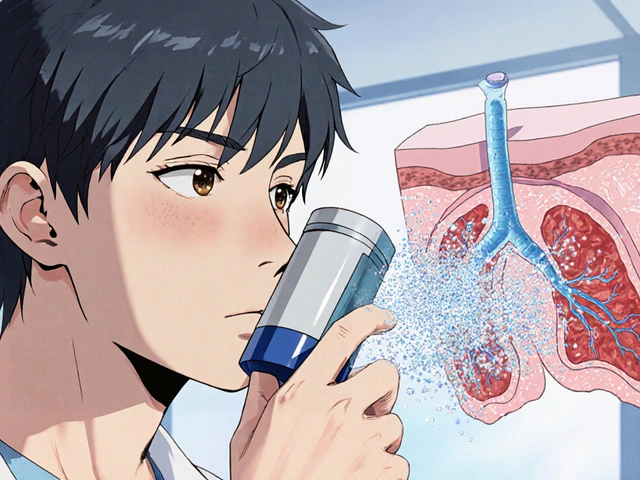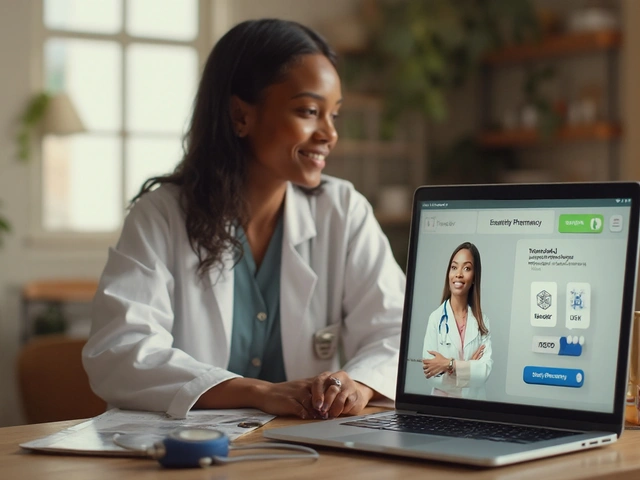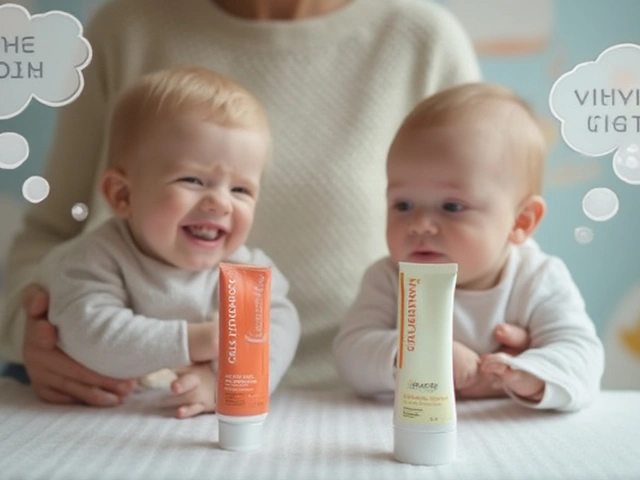When you pick up a prescription, you might see a label for a generic drug instead of the brand name you recognize. You might wonder: does it really work the same? The answer isn’t just yes-it’s backed by one of the most rigorous drug approval systems in the world. The U.S. Food and Drug Administration (FDA) doesn’t just approve generic drugs because they’re cheaper. It approves them because they must prove, scientifically, that they work exactly like the brand-name version.
Same Active Ingredient, Same Effect
Every generic drug has to contain the exact same active ingredient as the brand-name drug. That means if your brand-name pill has 20 milligrams of atorvastatin, the generic has 20 milligrams of atorvastatin-no more, no less. The FDA requires this precision within a ±5% tolerance. It’s not about matching the color, shape, or taste. Those are just packaging choices. What matters is what the drug does inside your body.Bioequivalence: The Core Test
The real proof comes from bioequivalence studies. These aren’t guesswork or assumptions. They’re tightly controlled clinical trials, usually with 24 to 36 healthy volunteers. Each person takes the brand-name drug and the generic version at different times, under the same conditions-often fasting, sometimes after eating, depending on the drug. The FDA measures two key things: how fast the drug enters your bloodstream (Cmax) and how much of it gets absorbed over time (AUC). The generic’s results must fall within 80% to 125% of the brand’s. That’s not a wide margin-it’s a narrow, scientifically validated window. The 90% confidence interval for both values must stay inside those bounds. If it doesn’t, the drug doesn’t get approved. This isn’t just theory. For drugs like metformin or simvastatin, studies tracking millions of patients show no difference in blood sugar control or cholesterol reduction between brand and generic. Even for complex drugs like levothyroxine, the FDA tightened the bioequivalence range to 90-111% because tiny changes can affect thyroid function. The system adapts based on risk.Manufacturing Must Be Flawless
It’s not enough for the drug to work the same in a lab. It has to work the same every single time, in every batch, from every factory. That’s why the FDA inspects manufacturing sites-just like it does for brand-name drugs. All facilities must follow Current Good Manufacturing Practices (cGMP), which are legally binding standards covering everything from equipment cleaning to employee training. Each batch must meet USP <905> standards for content uniformity: every tablet or capsule must contain between 85% and 115% of the labeled amount of active ingredient. That’s stricter than many food safety standards. If a factory fails an inspection, the FDA can block approval or pull already-approved drugs off the market. Inactive ingredients? They can be different. A generic might use cornstarch instead of lactose, or a different dye. But those excipients can’t be harmful. The FDA maintains an Inactive Ingredient Database with safe limits for over 500 substances across 80 delivery methods-from eye drops to inhalers. If a new excipient pops up, it’s reviewed for safety before approval.
The ANDA Process: Faster, But Not Easier
Generic drug makers don’t need to repeat the 10-year, billion-dollar clinical trials that brand-name companies did. That’s why generics cost less. Instead, they file an Abbreviated New Drug Application (ANDA). But “abbreviated” doesn’t mean “easy.” An ANDA typically includes 30,000 to 50,000 pages of data: chemistry reports, manufacturing details, stability tests, and bioequivalence results. The FDA reviews each section-chemistry, manufacturing, labeling, and biopharmaceutics-separately. In 2022, about 35% of ANDAs were initially refused because they were incomplete or poorly organized. That’s not a small number. It means most applicants get it wrong the first time. The FDA’s goal is to approve standard ANDAs within 10 months. In 2022, they hit 91.3% of that target. But if there’s a problem-say, the bioequivalence study was flawed or the facility didn’t pass inspection-the clock stops. The company gets a Complete Response Letter. Fixing those issues can add 6 to 12 months.Why Do Some People Say Generics Don’t Work?
You’ve probably heard stories. “I switched to the generic and felt different.” “My blood pressure didn’t drop.” Sometimes, these reports are real. But they’re rarely because the drug is ineffective. For drugs with a narrow therapeutic index-like warfarin, lithium, or levothyroxine-small changes in blood levels can cause noticeable effects. Even if the generic meets FDA standards, a patient who’s been stable on a brand for years might feel a subtle shift when switching. That’s why some doctors still prefer to stick with one version. The FDA acknowledges this. That’s why it created a list of drugs requiring tighter bioequivalence standards. And it’s why pharmacists are trained to warn patients: if you notice changes after switching, tell your doctor. It’s not a failure of the system-it’s a reminder that medicine is personal.Real-World Results Back the Science
Data doesn’t lie. A 2023 analysis of 15 million patient records by IQVIA found no difference in clinical outcomes between brand and generic versions of 20 common drugs. Adherence rates were actually 3.2% higher for generics-because people could afford them. The FDA’s Adverse Event Reporting System shows nearly identical rates of side effects between brand and generic drugs: 1.6 reports per million prescriptions for brands, 1.7 for generics. That’s statistically the same. Even on forums like Reddit’s r/pharmacy, 82% of pharmacists say they’ve seen no meaningful difference in real-world use. The remaining 18% mention rare cases with complex forms-like inhalers or topical creams-where delivery matters more. But even there, the FDA’s product-specific guidelines ensure equivalence.
Who Makes These Drugs? And Why Does It Matter?
You might think generics are made in cheap factories overseas. Some are. But many are made in the U.S., Canada, Germany, and Japan. The FDA inspects all of them-whether they’re in Ohio or India. In 2022, 21% of Complete Response Letters were issued because of manufacturing issues at foreign sites. The market is dominated by big players like Teva, Viatris, and Sandoz. But 55% of generic approvals go to smaller companies. That’s intentional. The FDA’s Generic Drug Competition Action Plan pushes for more suppliers to prevent shortages. When only one company makes a generic, prices can spike. When five companies make it, prices drop-and access improves.What’s Next?
The FDA is preparing for a wave of new generics. Over $260 billion in brand-name drugs will lose patent protection between 2024 and 2028. That means more ANDAs, more scrutiny, and more demand for faster reviews. The new GDUFA III agreement, running through 2027, gives the FDA $1.1 billion to cut review times to 8 months for standard applications and 6 months for priority ones. They’re also building a new pathway for biosimilars-generic versions of biologic drugs like Humira-starting in 2024. And for critical drugs in short supply? The FDA now has a fast-track process. In 2023, 47 drugs got this designation. Twelve were approved in under six months-half the normal time.Bottom Line
Generic drugs aren’t “good enough.” They’re held to the same standard as brand-name drugs-sometimes even stricter. The FDA doesn’t cut corners. It uses science, data, and inspection to ensure that when you take a generic, you get the same benefit, at a fraction of the cost. Over 90% of prescriptions in the U.S. are filled with generics. That’s not because people are settling. It’s because they can trust them.Are generic drugs as safe as brand-name drugs?
Yes. Generic drugs must meet the same safety and quality standards as brand-name drugs. The FDA inspects all manufacturing facilities-whether they make brand or generic drugs-and requires identical active ingredients, strength, dosage form, and bioequivalence. Adverse event reports for generics are statistically identical to those for brand-name drugs.
Why do some generics look different from the brand?
The appearance-color, shape, size, or flavor-doesn’t affect how the drug works. These differences come from inactive ingredients, which can vary between manufacturers. The active ingredient, the part that treats your condition, is identical. U.S. law requires generics to look different to avoid confusion with the brand name.
Can I trust generics for chronic conditions like high blood pressure or diabetes?
Absolutely. Studies tracking millions of patients with conditions like hypertension, diabetes, and high cholesterol show no difference in outcomes between brand and generic versions of drugs like lisinopril, metformin, or atorvastatin. Higher adherence rates with generics-because they’re cheaper-often lead to better long-term control.
What if I notice a change after switching to a generic?
If you feel different-like your symptoms return or side effects change-talk to your doctor or pharmacist. For drugs with a narrow therapeutic index (like warfarin or thyroid meds), even small changes can matter. But most perceived differences aren’t clinically significant. Your provider can check blood levels or switch you back if needed.
Are all generic drugs made overseas?
No. While many generic drugs are manufactured outside the U.S., the FDA inspects all facilities-domestic and international-before approval. Over 50% of generic drug manufacturing sites are now located in the U.S., Canada, and Europe. The FDA’s inspections are equally strict, no matter where the factory is.
How long does it take for a generic to get approved?
The FDA aims to approve standard ANDAs within 10 months. But many applications are incomplete or flawed on first submission, which delays approval. Once a company fixes issues, it can take 6 to 12 more months. For complex drugs like inhalers or injectables, the process can take 3-5 years from development to approval due to extra testing requirements.







